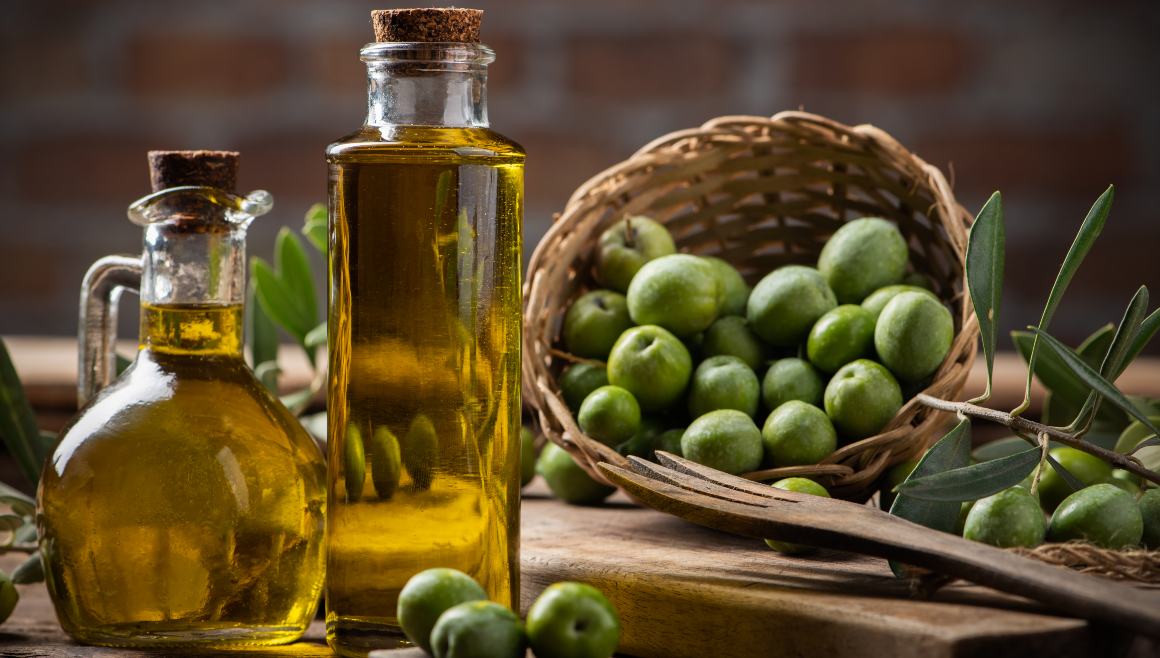Is Olive Oil Higher in Omega-3 or Omega-6?
Published:
Olive oil has been a dietary staple in Mediterranean regions for centuries. Lauded for its health benefits and flavor, it has become popular worldwide. But when it comes to omega fatty acids, is olive oil higher in anti-inflammatory omega-3s or pro-inflammatory omega-6s?
Contents:
This comprehensive article reviews the latest evidence on olive oil’s fatty acid composition. You’ll learn:
- The main types of omega-3 and omega-6 fats
- Why the balance between them matters
- The primary fats that make up olive oil
- The specific omega-3 and omega-6 content of different olive oil varieties
- How olive oil’s omega profile compares to other vegetable oils
- How to use olive oil as part of a balanced omega intake
By the end, you’ll understand whether olive oil naturally provides more omega-3 or omega-6 fatty acids.

Overview of Omega-3 and Omega-6 Fatty Acids
Omega-3 and omega-6 are essential polyunsaturated fats that must be obtained through the diet. Here’s an overview:
- Omega-3s have strong anti-inflammatory effects. The main types are ALA, EPA and DHA.
- Omega-6s, like linoleic acid (LA), are pro-inflammatory when excessive in the diet.
- Historically, human diets provided a 1:1 ratio of omega-6 to omega-3. Today's average is around 10:1 to 50:1 - an imbalance linked to chronic disease risk.
- The optimal dietary ratio is estimated to be 2:1 to 4:1 omega-6 to omega-3.
So getting these fatty acids in the proper proportions is recommended for good health - but where does olive oil fit in?
Predominant Fatty Acids in Olive Oil
The primary fatty acids found in olive oil are:
- Oleic acid - A monounsaturated omega-9 fat that makes up 55-85% of olive oil. Has anti-inflammatory properties.
- Linoleic acid - The major omega-6 fat, comprising around 3.5-21% of olive oil.
- Alpha-linolenic acid (ALA) - The main plant-based omega-3 fat. Found in very small amounts.
- Palmitic and stearic acids - Saturated fats making up the remaining percentage.
So while olive oil provides small quantities of both omega-3 ALA and omega-6 LA, its main fat is the monounsaturated oleic acid.
Omega-3 Versus Omega-6 Amounts in Olive Oil
To get more specific, here is the typical omega-3 and omega-6 content in 100 grams of olive oil:
- Total fat: 100 grams
- Omega-3 ALA: trace to 1 gram
- Omega-6 LA: 3.5-21 grams
This equates to at least 3 to 4 times more omega-6 than omega-3 in olive oil.
Factors like olive variety, region, and processing methods impact the exact amounts. But omega-6 substantially exceeds omega-3 levels.
Next, let’s see how different types of olive oil compare.
Omega Profile of Olive Oil Varieties
There are several major varieties of olive oil:
Extra virgin olive oil (EVOO)
- Highest quality and purity
- Omega-6 LA content: 3.5-12%
- Omega-3 ALA content: 0.4-1%
- Omega-6 to omega-3 ratio: 8:1 to 15:1
Virgin olive oil
- Slightly lower quality than EVOO
- Omega-6 LA content: 7-15%
- Omega-3 ALA content: 0.5-1%
- Omega-6 to omega-3 ratio: 10:1 to 15:1
Refined olive oil
- More processed and filtered
- Omega-6 LA content: 10-21%
- Omega-3 ALA content: up to 0.8%
- Omega-6 to omega-3 ratio: 13:1 to 20:1
While amounts vary, all forms of olive oil contain substantially more omega-6 than omega-3.
Comparison to Other Vegetable Oils
How does olive oil compare to other common vegetable oils? Here are the typical omega-6 to omega-3 ratios:
- Olive oil: 8:1 to 20:1
- Canola oil: 2:1
- Sunflower oil: 65:1
- Soybean oil: 7:1
- Corn oil: 46:1
- Safflower oil: 77:1
Olive, canola and soybean oil are lower in omega-6 than corn, sunflower, and safflower oils. But only canola provides more omega-3 than omega-6.
Tips to Balance Olive Oil Omega Intake
To balance your essential fatty acids when cooking with olive oil:
- Use olive oil alongside other more omega-3 rich oils like flaxseed or canola oil.
- Opt for extra virgin olive oil for slightly more favorable omega ratios.
- Include foods abundant in omega-3s like fatty fish, walnuts, chia and flax seeds.
- Limit intake of fried foods and other products made with high omega-6 oils.
- Consider an omega-3 EPA/DHA supplement to help restore balance.
Olive oil can be part of a healthy, balanced diet as long as omega-3 intake is sufficient from other sources.
Is Olive Oil Higher in Omega-3 or Omega-6? Conclusion
In summary, while olive oil provides small amounts of both omega-3 and omega-6 fatty acids, it naturally contains significantly higher levels of omega-6 linoleic acid.
The ratio of omega-6 to omega-3 is estimated to be around 8:1 for extra virgin olive oil, up to 20:1 for more refined varieties.
Some olive oil can fit into an overall healthy dietary pattern, but be sure to also include ample omega-3 sources from fatty fish, plant foods, or supplements to balance intake.
Focusing on getting enough anti-inflammatory omega-3s while limiting excess omega-6 consumption can help reduce inflammation and promote good health.















